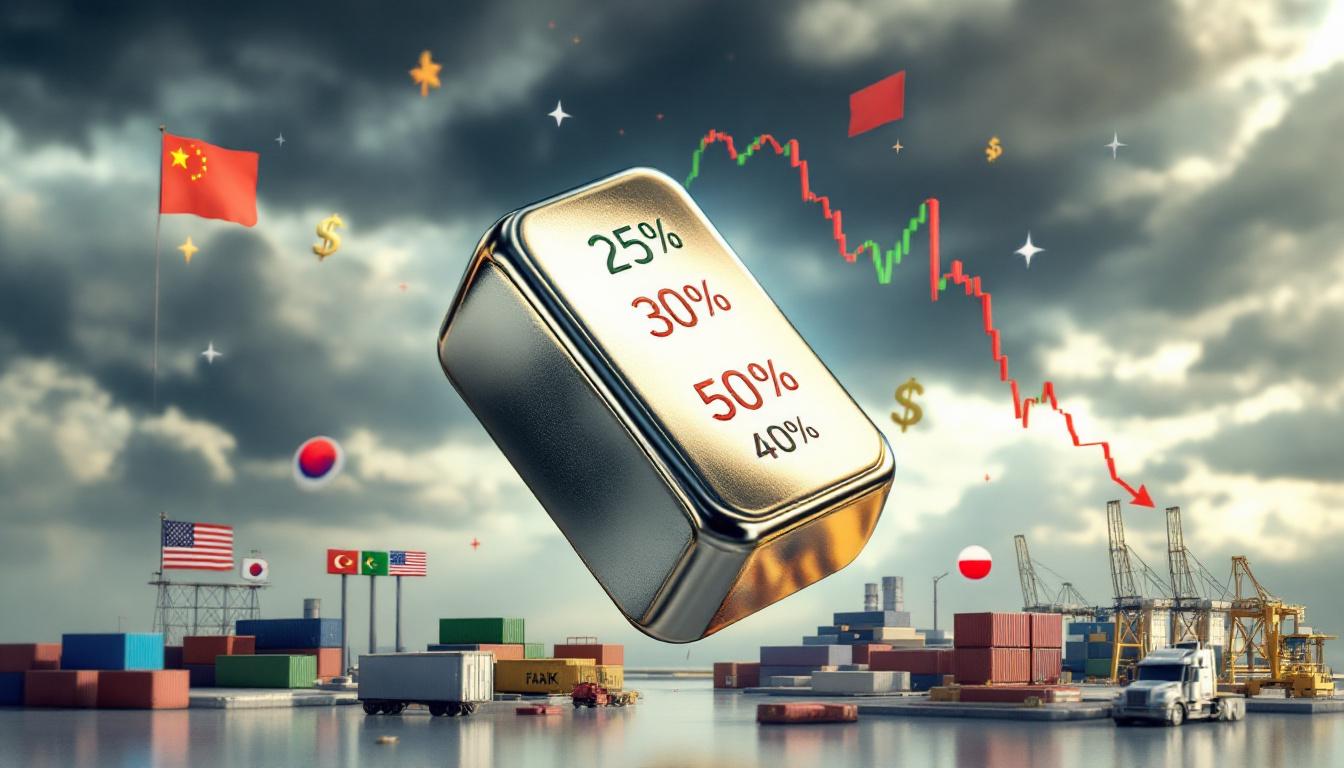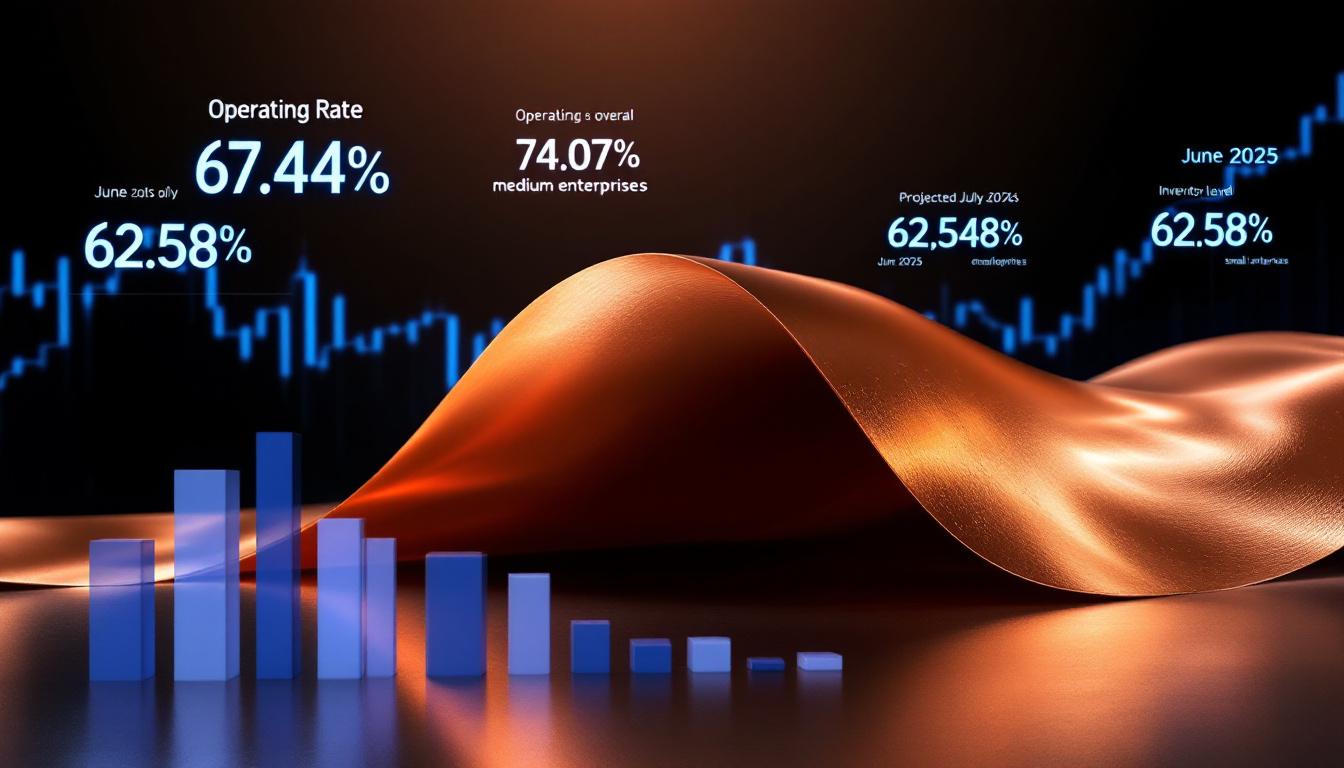How Is Gold Being Reintegrated Into the Global Monetary System?
The global monetary landscape is undergoing a profound transformation, with gold reclaiming its historical role at the center of international finance. This shift, largely unreported in mainstream media, represents one of the most significant monetary developments of the 21st century.
Central Bank Accumulation and Strategic Positioning
Since November 2024, the United States has become a net importer of gold, with inflows described by industry experts as "unprecedented" in recent history. This marks a dramatic shift in gold flows, as historically the U.S. has been a major exporter of precious metals.
Central bank demand has emerged as the primary driver pushing gold prices to record highs in 2025. This isn't merely cyclical investment activity—it represents strategic positioning by nation-states preparing for monetary system changes.
BRICS nations (Brazil, Russia, India, China, and South Africa) have accumulated massive gold reserves as part of what appears to be a coordinated strategy to reduce dollar dependency. According to former Brazilian President and head of the New Development Bank, Delm Maruso, BRICS has agreed in principle to establish a gold settlement currency called "the unit" that would be 40% gold-backed and deliverable to central banks on demand.
"The golden rule of negotiating and success: He who has the gold makes the rules," former President Trump stated in an April 20, 2023 social media post—a statement that has proven prescient as major powers jockey for position in the emerging monetary order.
Regulatory and Institutional Shifts
Basel III regulations, with a July 2025 implementation deadline, are fundamentally altering how financial institutions view and value gold. These regulations reclassify physical gold as a Tier 1 asset on bank balance sheets—essentially treating gold as risk-free, similar to cash and high-quality sovereign bonds.
In a significant policy proposal, economist Judy Shelton has advocated for the U.S. Treasury to issue 50-year bonds partially backed by gold reserves. This concept, once considered fringe economic theory, has gained traction among fiscal conservatives seeking alternatives to pure fiat currency.
Perhaps most telling, Treasury Secretary Scott Bent's largest hedge fund position prior to his appointment was physical gold—a revelation that signals shifting sentiment even among traditional financial elites.
Market Structure Changes
The London Bullion Market Association (LBMA), the world's largest gold trading hub, has been drained to historically low levels of physical metal. This supply constraint has extended settlement times from the traditional T+1 (next-day delivery) to T+8 weeks—an unprecedented delay indicating severe physical supply shortages.
A stark discrepancy exists between paper gold contracts and actual physical gold bars available for delivery. Daily trading volume on the LBMA averages 2.9 billion ounces against a physical float of approximately 260 million ounces—revealing a leverage ratio that has become increasingly unsustainable.
Despite gold's exceptional rise reaching all-time highs of $3,440 per ounce in April 2025, mainstream media coverage remains minimal. This media blackout serves as a striking indicator of the disconnect between physical market realities and financial reporting narratives.
What's Happening with Gold Prices and Market Dynamics?
Gold's current price trajectory defies conventional market patterns, suggesting fundamental shifts in how the precious metal is valued and traded globally.
Record-Breaking Price Movement
From February to April 2025, gold surged from approximately $2,900 to nearly $3,440—an 18.6% increase in just two months. This rapid ascent differs qualitatively from previous bull markets, demonstrating unusual strength and resilience.
When gold experienced a sharp $200 price drop in March 2025, it recovered within days rather than weeks or months—behavior atypical of previous correction patterns. This quick rebound suggests powerful underlying demand that immediately absorbs any price dips.
The most remarkable aspect of gold's current bull market is its ability to continue making new all-time highs with minimal mainstream media acknowledgment. During April 2025, major financial networks mentioned gold approximately once every 47 news cycles, while covering cryptocurrencies nine times more frequently despite gold's superior performance.
Institutional vs. Retail Participation
According to veteran resource investor Rick Rule, retail allocation to gold investments remains at just 0.5%—from average investors to major endowment funds like Harvard's. This minimal participation from small investors stands in stark contrast to previous gold bull markets, which typically saw enthusiastic retail buying near cycle peaks.
"What makes this gold market analysis unique is the conspicuous absence of public participation," explains Rule. "We're seeing all-time highs driven almost exclusively by central bank and institutional buying, with virtually no retail investment despite record prices."
Major institutional investors and central banks appear to be strategically positioning ahead of broader public awareness. This pattern suggests informed money is moving first, potentially indicating that current price levels represent early stages rather than a market top.
When comparing financial news coverage, the disparity becomes even more striking. Bitcoin receives approximately nine times more coverage than gold on financial news networks, despite gold's superior performance and larger market. This media imbalance helps explain why public awareness of gold's historic performance remains muted.
Why Is Silver Lagging Behind Gold?
While gold has captured headlines with its record prices, silver's relative underperformance presents what many experts consider an extraordinary investment opportunity based on both historical patterns and fundamental supply constraints.
Historical Gold-Silver Ratio Analysis
As of April 2025, the gold-silver ratio stands at approximately 104:1—meaning it takes 104 ounces of silver to purchase one ounce of gold. This ratio represents an extreme historical anomaly.
In 150 years of documented market history, the ratio has only touched or exceeded 100:1 during two or three brief periods. Each previous instance was followed by dramatic ratio compression, with silver substantially outperforming gold in subsequent months.
The geological ratio of silver to gold in the Earth's crust was approximately 16:1 for most of human history, though recent mining depletion has reduced this to about 7:1. Despite this increasing physical scarcity, the price ratio remains at historically extreme levels.
Over the past 200 years, the average gold-silver price ratio has hovered around 40:1. The current 104:1 ratio represents a 2.6x deviation from this long-term average—a statistical anomaly that has historically corrected through silver appreciation rather than gold depreciation.
Silver Market Fundamentals
Silver's geological profile differs significantly from gold's. While gold is often found in deep deposits, silver is typically found in "epiothermal" deposits near the Earth's surface. This geological reality means that most easily accessible silver has already been mined, with remaining reserves requiring more expensive extraction methods.
Global silver demand is experiencing unprecedented pressure from multiple sources:
China has emerged as an aggressive buyer of silver dore and concentrate globally, particularly from Peru and other Latin American producers. Chinese buyers are reportedly paying double what Western refineries offer for silver concentrate.
India has purchased between 850-900 million ounces of silver over the last 4-5 years—approximately equivalent to global annual mine production.
In an unprecedented move, Russia has added silver to their strategic national stockpile—the first time a major nation has designated silver as a strategic reserve asset.
Market Manipulation and Distortion
Commercial banks maintain the largest concentrated short position of any commodity traded on the COMEX futures exchange. This positioning creates persistent downward pressure on silver prices.
On the LBMA, daily silver trading volume reaches 2.9 billion ounces against a physical float of merely 260 million ounces. This daily trading volume equals approximately 3.5 times the annual global mine production.
COMEX silver contracts are rehypothecated (the same physical silver pledged against multiple paper contracts) approximately 20 times the amount of available physical bars. This extreme leverage creates vulnerability to delivery demands.
The market dynamic is changing as sovereign wealth funds and national governments increasingly challenge this paper system by standing for physical delivery rather than accepting cash settlement—a development that threatens the entire fractional-reserve precious metals trading system.
How Should Investors Approach Precious Metals Today?
Amid monetary uncertainty and market volatility, developing a sound strategy for precious metals investment becomes increasingly important for portfolio preservation and growth.
Investment Philosophy for Gold and Silver
The primary purpose of precious metals ownership isn't speculation but wealth preservation. As one industry veteran explains: "Don't buy gold and silver to become wealthy—they are wealth preservation vehicles first and foremost."
Throughout human history, gold and silver have outlasted wars, hyperinflation, economic depressions, and global pandemics. Their 5,000-year track record as monetary metals provides confidence during periods of financial system stress.
For many sophisticated investors, physical precious metals represent an exit strategy from a financial system showing increasing signs of structural weakness. By converting digital currency units into physical metal, investors remove counterparty risk from their wealth storage.
Silver presents what investment professionals term an "asymmetrical risk-reward" opportunity—limited downside potential coupled with significant upside potential. Trading at a 40% discount to its 1980 inflation-adjusted high while featuring expanded industrial applications, silver's value proposition is particularly compelling.
Strategic Accumulation Method
Rather than attempting to time market tops and bottoms, successful precious metals investors implement disciplined buying programs. Purchasing a consistent amount every two weeks or month—regardless of price—removes emotional decision-making from the equation.
The "pay yourself first" principle should guide acquisition strategy—prioritizing wealth preservation purchases before discretionary spending. This approach ensures steady accumulation through all market conditions.
The compounding effect of time and consistent accumulation works powerfully in an investor's favor. A modest monthly silver purchase maintained over decades can result in substantial physical holdings, particularly when acquired during periods of price suppression.
Beginning a precious metals accumulation program early and maintaining discipline throughout your investment lifetime provides maximum benefit. Even modest allocations sustained over time can significantly enhance portfolio resilience.
Current Market Opportunity
With the gold-silver ratio at 104:1, historical patterns suggest a generational opportunity in silver. Traditionally, when this ratio approaches 80:1, it signals an optimal time to exchange gold for silver to capture the eventual ratio compression.
Despite expanded industrial applications in solar panels, electric vehicles, and medical devices, silver currently trades at a substantial discount to its inflation-adjusted 1980 peak price of approximately $150 per ounce (in 2025 dollars).
Market distortions created by paper trading typically magnify the eventual correction when physical demand overwhelms the paper market's ability to suppress prices. This pattern has repeated throughout commodity market history, from the Hunt brothers' silver squeeze to the nickel market disruption of 2022.
FAQs About Gold and Silver Investment
What factors are driving gold to all-time highs?
Central bank accumulation represents the primary driver of gold's recent price surge. As nation-states and monetary authorities diversify reserves away from traditional currencies, gold has benefited from this structural demand shift. Additionally, Basel III regulations that reclassify gold as a Tier 1 asset have increased institutional interest. The potential reintegration of gold in the monetary system through initiatives like the BRICS "unit" currency adds further momentum. Finally, sophisticated institutional positioning ahead of broader public awareness has created sustained buying pressure with minimal retail participation.
Why is silver underperforming gold despite the gold rally?
Silver markets demonstrate more concentrated paper market manipulation through commercial bank short positions. When the gold-silver ratio reaches extreme levels near 100:1, historical patterns suggest this anomaly typically resolves through silver outperformance in subsequent periods. Additionally, industrial demand for silver sometimes creates conflicting price signals, as economic concerns can temporarily suppress industrial consumption expectations. However, physical silver demand from China, India, and now Russia is creating unprecedented pressure on available supplies that will eventually overcome paper market pricing mechanisms.
How should new investors approach precious metals?
New investors should view gold and silver as safe haven assets rather than speculative investments. Implementing a disciplined buying program—purchasing a consistent amount regardless of price fluctuations—removes emotional decision-making from the equation. Focus on physical ownership with direct control where possible, supplemented by fully-allocated storage options for larger positions. Begin with silver during periods of extreme gold-silver ratios (above 80:1) to capitalize on eventual ratio normalization. Maintain a long-term perspective, understanding that precious metals serve as insurance against monetary system dysfunction before they function as growth investments.
What is the significance of gold in the evolving monetary system?
Gold appears to be quietly reintegrating into the global monetary system through multiple channels. Central bank accumulation, particularly by BRICS nations, signals preparation for a new monetary framework. The proposed BRICS "unit" currency would be 40% backed by gold and deliverable to central banks on demand—potentially creating the first major gold-backed currency since the Bretton Woods system's collapse in 1971. Within the United States, proposals for gold-backed Treasury instruments signal growing mainstream interest in gold's monetary role. Basel III's reclassification of gold as a Tier 1 asset effectively reintroduces gold into the banking system's foundation, representing a significant shift from post-1971 monetary orthodoxy.
How does physical delivery impact precious metals markets?
Physical delivery demands are creating unprecedented strain on the precious metals trading system. LBMA settlement times have extended from T+1 (next-day delivery) to T+8 weeks, indicating severe physical supply constraints. Significant discrepancies exist between paper contracts and available physical metal, with COMEX silver contracts reportedly leveraged 20:1 against available bars. Nations and sovereign wealth funds increasingly stand for physical delivery rather than accepting cash settlement, challenging the fractional-reserve precious metals trading model. This transition from paper to physical settlement preference represents a fundamental shift in market structure that has historically preceded major price adjustments in commodity markets. For more insights, investors should review the latest gold ETFs guide and gold market outlook 2025 reports.
Looking for Early Alerts on the Next Major Mineral Discovery?
Discovery Alert's proprietary Discovery IQ model delivers real-time notifications on significant ASX mineral discoveries, instantly empowering subscribers to identify actionable gold and precious metal opportunities ahead of the broader market. Begin your 30-day free trial today at discoveryalert.com.au and position yourself for the next major mineral discovery.




